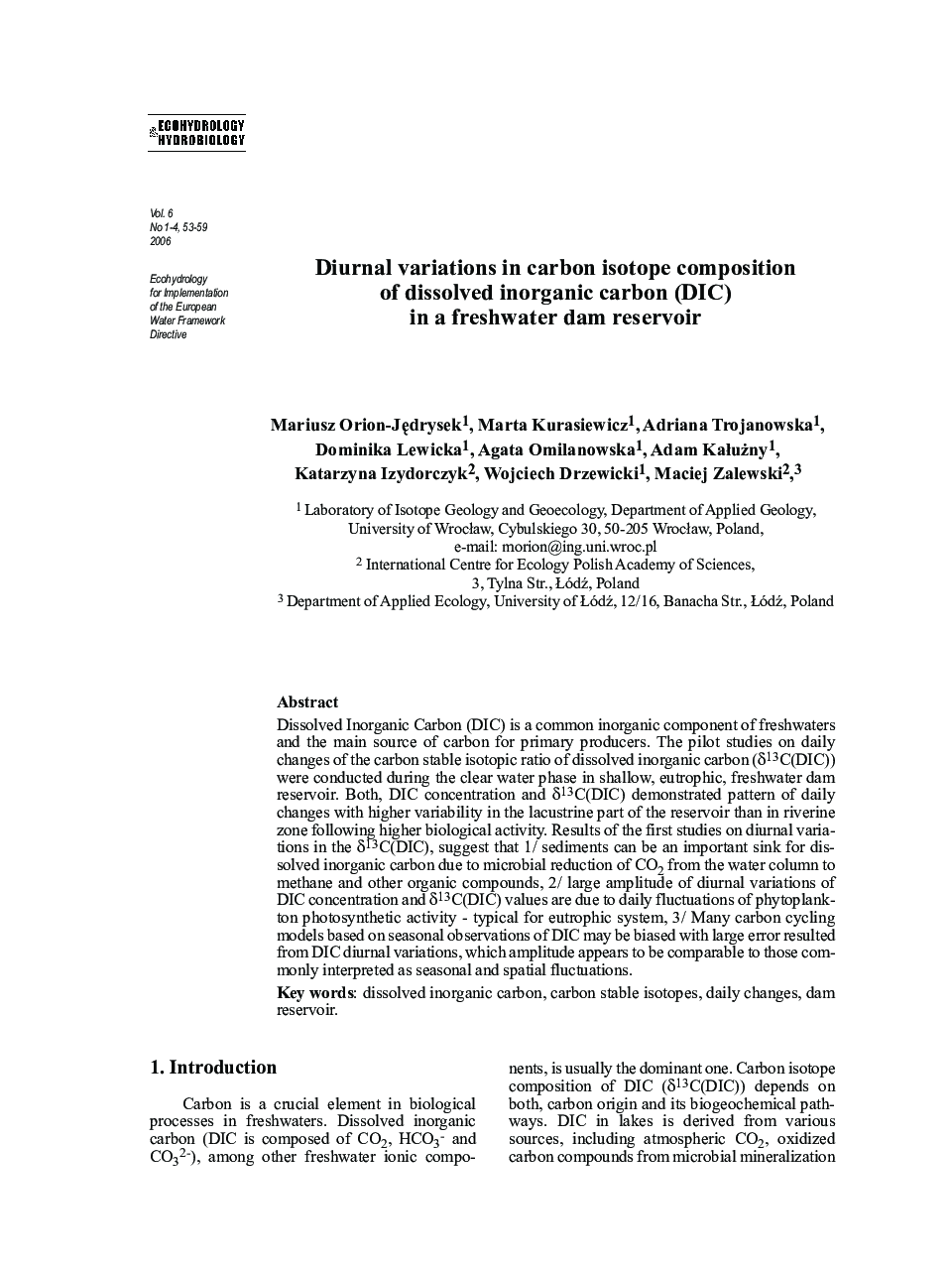| Article ID | Journal | Published Year | Pages | File Type |
|---|---|---|---|---|
| 4388333 | Ecohydrology & Hydrobiology | 2006 | 7 Pages |
Dissolved Inorganic Carbon (DIC) is a common inorganic component of freshwaters and the main source of carbon for primary producers. The pilot studies on daily changes of the carbon stable isotopic ratio of dissolved inorganic carbon (δ13C(DIC)) were conducted during the clear water phase in shallow, eutrophic, freshwater dam reservoir. Both, DIC concentration and δ13C(DIC) demonstrated pattern of daily changes with higher variability in the lacustrine part of the reservoir than in riverine zone following higher biological activity. Results of the first studies on diurnal variations in the δ13C(DIC), suggest that 1/ sediments can be an important sink for dissolved inorganic carbon due to microbial reduction of CO2 from the water column to methane and other organic compounds, 2/ large amplitude of diurnal variations of DIC concentration and δ13C(DIC) values are due to daily fluctuations of phytoplankton photosynthetic activity - typical for eutrophic system, 3/ Many carbon cycling models based on seasonal observations of DIC may be biased with large error resulted from DIC diurnal variations, which amplitude appears to be comparable to those commonly interpreted as seasonal and spatial fluctuations.
